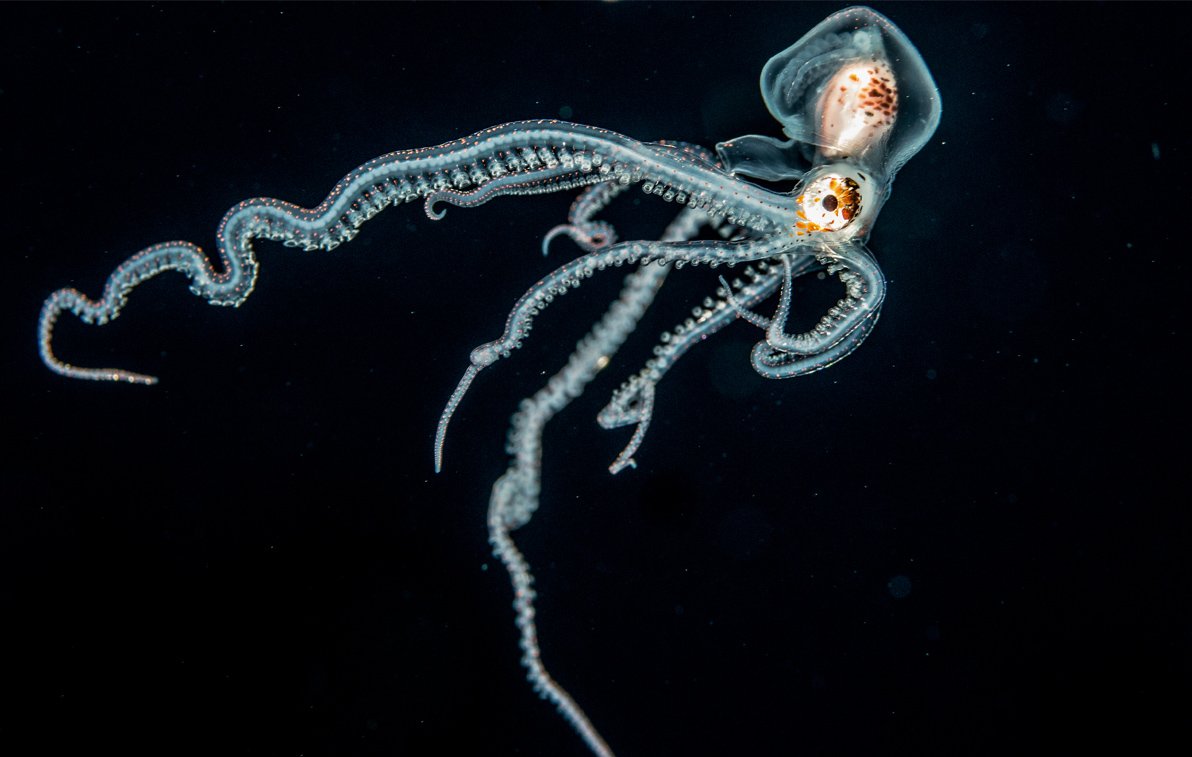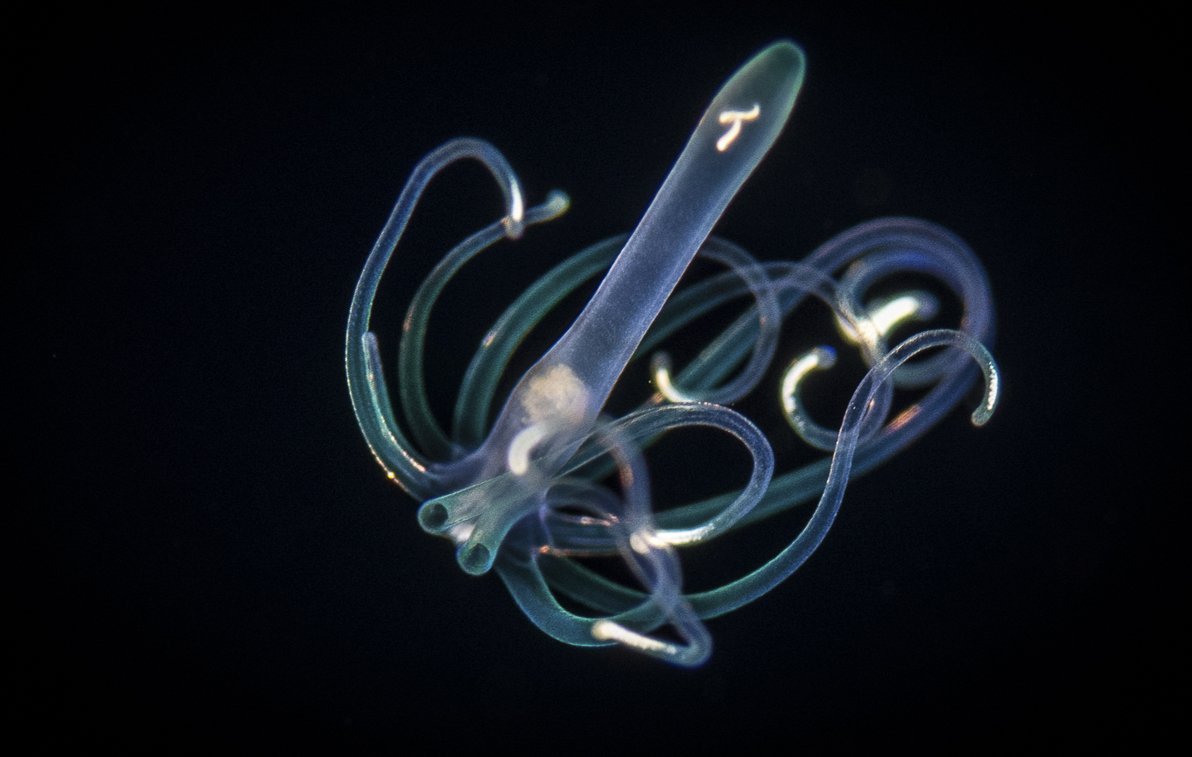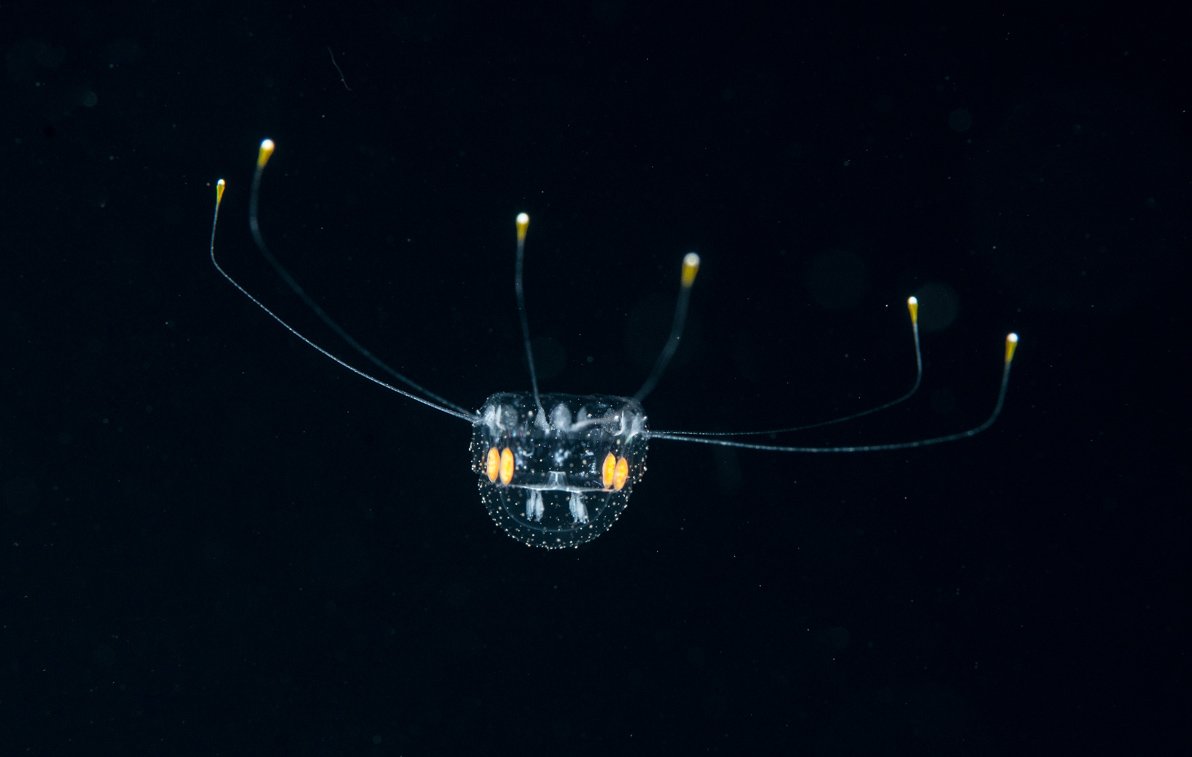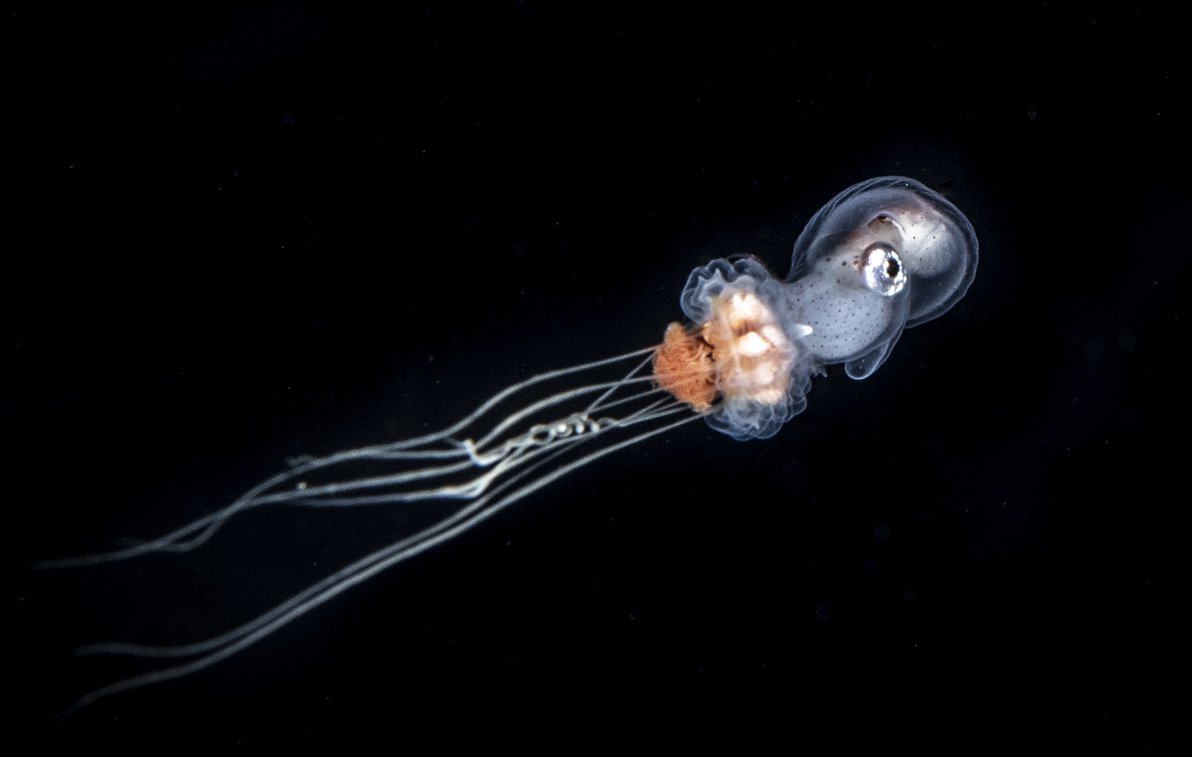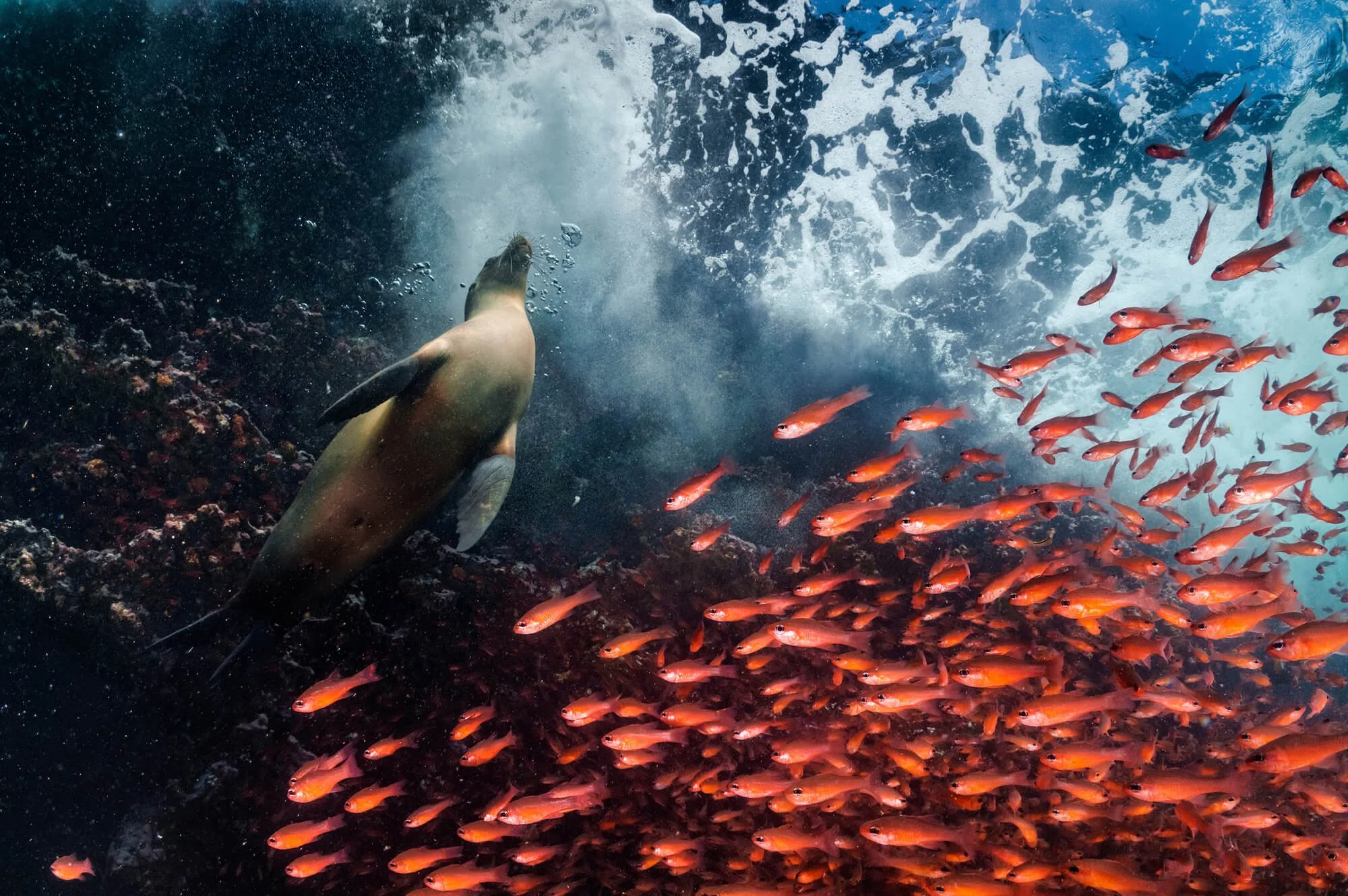Diving into Darkness: The Illuminating Images of Helen Brierley
Most life on this planet we named Earth exists in the oceans. The vast majority of it is unknown to humans. Approximately 99.9 percent of the biosphere—all the space that can support life—is housed in the oceans. We’ve explored only a tiny fraction of this realm, but we now know our survival depends on it.
Species that evolved millions of years before humans showed up are crucial to the functioning of ecosystems we are only just starting to understand. We are indebted to sea life we’ve yet to meet, and may never know, if we continue on our current path.
According to a summary of the forthcoming UN report on ecological biodiversity, 1 million species now face extinction, with many expected to vanish within decades. The decimation of the natural world by human activity is occurring at unprecedented rates. If we keep this up, we have no future. It’s time to change the way we see our world — and our place within it.
For World Biodiversity Day (May 22), we caught up with underwater photographer, diver and sailor Helen Brierley, whose images of life in the inky depths challenge the viewer to reconsider who is the true “other” in a world foreign yet essential to the civilization that threatens it.
What is your earliest ocean memory?
When we were young, our parents would drive all five of us kids to the English coast in summer. The excitement would approach fever pitch as we kept a lookout for our first glimpse of the ocean. The first one to spot the shimmer in the distance would scream out, “the sea!!” and the rest would have to wait till the next trip for the glory of being first.
How has diving and sailing changed your perception of our world?
A connection to the ocean is a real privilege. As a sailor, I am in awe of its power, while as a diver I have been able to witness the many treasures it holds in its depths. Whether harnessing the power of the wind, waves and currents in a sailboat or drifting with the flow beneath the surface, I have come to a better understanding of how small we are individually in this world, but what tremendous damage we are all doing to what is our original life source.
What changes have you witnessed in the oceans throughout your career?
I have seen reefs struggling to survive all over the world: damaged by ever increasing storms, trawled by nets and broken up by anchors. I have photographed the bright white bones of bleached coral barrens and the dull monotony of algae covered reefs that were once a riot of color. I have untangled shopping bags wrapped around delicate coral formations and watched filter feeders swallow whole bellyfulls of drifting detritus. But the biggest and longest lasting change has to be from the trash infesting our seas, especially plastic waste. Some pristine beaches are covered with trash on every incoming tide, and shoreline mangrove roots act like nets, hoarding whatever the sea brings in. And yet the flow of plastics and other human waste into our oceans does not seem to be slowing down.
Your blackwater series spotlights life beneath the surface. To us land-dwellers, they appear utterly foreign and alien. But in truth, most of the life on this planet lives concealed in the darkness of the depths. Our lives are intertwined with this unknown world. Why do you focus your lens on these creatures?
The thrill of diving, to me, is the anticipation of what might be seen and the exhilaration of that chance encounter when it comes. Nowhere is this more evident than on a blackwater dive where, drifting in the inky black, late at night, seeing nothing except what is in the narrow beam of the focus light, you wait, finger hovering over the shutter button. At the mercy of the current, you have no idea how far you are traveling in your quest to capture any sign of life before it darts or drifts off back into the blackness. So much of what we see on these dives appears alien to us divers too, much of it never photographed before, sometimes even un-described by science.
What does it feel like to dive at night? And to witness bioluminescence?
Diving at night feels as though you have passed deeper into the realm of the unknown. Often the reef will come alive with behavior that is barely seen in daylight. Sharks will hunt, parrot fish will spin their protective cocoons, crabs will mate and eels will wriggle out of their hiding places to forage in the crevasses. Turning off the dive lights, there is only blackness, but sometimes, a trailing hand through the water can produce a sparkling star trail, like Tinkerbell in Disney’s Peter Pan. This is bioluminescence. In these conditions, sailing at night, the boat leaves a wake of shimmering blue and passing dolphins leave a glittery path. It is truly magical to witness.
What is your favorite sea creature you've ever photographed?
I am obsessed with the octopus. I am happy to spend a whole dive with just one, as it takes on its many forms and becomes ever more inquisitive about my camera. You can see their intelligence in their eyes and I can no longer bear to see them on a dinner plate. They have figured in legends and folklore for as long as man has fished and have been painted and drawn by fascinated artists for centuries. Each octopus species is so different: One of the most venomous creatures out there is the tiny blue ring octopus, yet the giant Pacific octopus seems so docile, sacrificing itself to care for its eggs; while the mimic octopus has become the master of shape-changing to survive. Octopus are formidable predators on the reef at night as they spread their mantle over their catch, and are vicious fighters when attacked by moray eels.
More technically speaking, how do you get those blackwater shots? How do you know where to look for these creatures?
Generally the creatures seen on blackwater dives are tiny, so a macro lens is necessary to get close enough to the subject to fill the frame with even the smallest example. I use a full frame DSLR camera in an underwater housing with two strobes attached (powerful flashes) and one or two focus lights to hunt for the subject. The whole set up is unwieldy above water, but I add floats to make it neutrally buoyant while diving so that all my energy can go into getting the shot. So many of the creatures are translucent that it is important to balance the light: over-light them and detail and color will be lost, but underlight them and they will just fade into the black background. My golden rule for these dives is, “If it looks alive, shoot it,” as sometimes you have no idea what you just saw until you look at it on the computer screen later.
Why do you feel compelled to document life in the oceans? What is your message to people who see your images?
It is not until we see what is living in our oceans that we can even begin to appreciate it enough to start to care for it. Relatively few people ever get the chance to go beneath the surface, so I hope that my photographs can offer a glimpse of the incredible array of life that is down there. There is a quote I love by Rachel Carson — “drink in the beauty and wonder at the meaning of what you see.” If we really take the time to do this we will find it impossible to contribute to the destruction of that beauty.
In your opinion, what does it mean to be an activist, especially in today's world?
Anyone whose actions, however small, aim to change society can call themselves an activist. Today, a camera can be an impressive weapon in that fight for change – one post on social media can be shared around the world in minutes, influencing opinions, changing minds and raising funds. It is easy to be an activist if you have a passion and a way to express it.

